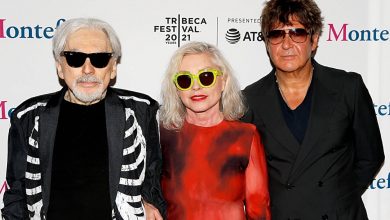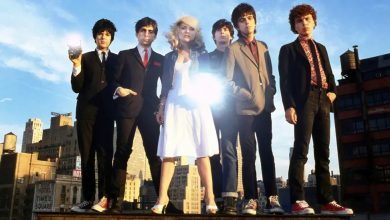Blondie’s Debbie Harry keeps a low profile in a hat and sunglasses as she goes shopping in Sydney
By MATT DEMARCO FOR DAILY MAIL AUSTRALIA – 28th April 2024
Debbie Harry stepped out in Sydney on Friday after performing at the Metro Theatre on ANZAC Day.
The lead vocalist of American rock band Blondie, 77, who hadn’t played a concert in Australia since 2017, was spotted shopping for souvenirs in the city.
The rocker and her band were in the country to headline the Pandemonium 2024 concerts in Melbourne, Sydney, and Brisbane alongside Alice Cooper, Deep Purple, and Placebo.
Debbie, who was born Angela Trimble, wore a white Dead Kennedys T-shirt, black yoga pants and thick-soled walking shoes as she explored the city.
The singer kept a low profile in a black baseball cap and dark statement sunglasses.


She also carried a Chanel cross-body handbag and tied a black hoodie around her waist.
Pandemonium kicked off in Melbourne at the Caribbean Gardens on April 20, before heading up to Sydney on April 25.
The festival finished up in Queensland with shows on April 27 at Doug Jennings Park on the Gold Coast and April 28 at Sandstone Point Hotel on Bribie Island.
However, Blondie were not able to play at the final performance.





It comes after former wild child rocker Debbie recently revealed her hell-raising days are behind her and she has taken up knitting.
The former heroin addict, has previously spoken about how she ‘tried everything’ during her band Blondie’s heyday.
She told The Big Issue: ‘I’m curious about how I will respond to being back out on the road, since I haven’t done it for a couple of years.’


‘I’ve had to change my behaviour over the years, and behaviour is very hard to change.
‘On tour these days I do what the women on the front during the French Revolution would do.
‘I sit there knitting and rocking back and forth.’
‘That’s what I do. I will be bringing my knitting needles with me.’




